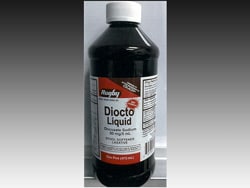Flimsy evidence behind many FDA approvals
https://in.reuters.com/article/us-health-fda-approvals-idINKCN1AV23K
(Reuters Health) – Many drugs granted accelerated approval by the U.S. Food and Drug Administration (FDA) lack clear evidence of safety and effectiveness, and the same is true for most high-risk medical devices, according to two new reports in the Journal of the American Medical Association.
The Accelerated Approval pathway makes potentially promising investigational medicines available for use before the usual amount of data has been collected to confirm their effectiveness and safety, Dr. Huseyin Naci from the London School of Economics and Political Science told Reuters Health by email.
“Drugs granted Accelerated Approval should be rigorously evaluated using convincing patient-centered clinical outcomes in rigorous studies,” Naci said. But, he added, “we have found numerous situations in which required confirmatory studies with rigorous designs and outcomes are not pursued or are not completed in a timely fashion, and in these cases, we are concerned that regulators appear to accept data that would not otherwise meet FDA standards.”
Naci’s team analyzed the FDA’s accelerated approval of 22 drugs for 24 medical conditions.
For standard approval, the FDA generally requires gold-standard randomized controlled trials (RCTs) that demonstrate a drug’s safety and effectiveness. Fourteen of these accelerated approvals, however, were exclusively based on less-rigorous trials.
Given the lower standard of evidence, the FDA required 38 more trials after approval to confirm the benefits of these drugs. Three years after approval, though, only 19 had been completed. Eleven more were underway and said to be on schedule, six others were delayed by more than 12 months, and two had been discontinued.
Most of these later trials still used outcomes that would not be acceptable for standard approval, and several studies failed to show a benefit or were terminated early.
For the 10 approvals that finally met the requirements established by FDA, the time to do so ranged from one to five years after the accelerated approval.
“Our findings suggest that expediency in drug development and approval can be successful but that drugs approved via the shorter route to market are rarely subject to tests even in the post-approval period that use established and clinically meaningful outcomes,” Naci said.
When the FDA approves medicines via its Accelerated Approval pathway, he said, the agency should clearly specify the data limitations and how required confirmatory studies are expected to compensate for these limitations.
A second report from Dr. Rita F. Redberg from the University of California, San Francisco, and colleagues paints a similar picture when approval is needed for modifications to high-risk medical devices.
“We expected to find generally high-quality evidence to support these changes, because these devices are important to health, and many are implanted and are difficult and/or dangerous to remove,” Redberg told Reuters Health by email. “We were surprised to discover that relatively few studies were randomized or blinded, which means that it is not known if the device was better than an alternative treatment (or better than no treatment), and whether any purported beneficial effect was actually due to the well-documented placebo effect of procedures and devices.”
“In addition, we were disturbed to find numerous discrepancies between the number of patients enrolled and the number of patients with data reported, indicating that there is loss (or incompleteness) of data evaluated by the FDA,” she said. “This raises concerns about missing data and selection bias.”
Of the 78 device modifications they studied, 71 were supported by a single clinical study, and half of these enrolled 185 or fewer patients. One in 12 studies did not specify what the researchers were looking to prove.
“I think the public assumes that medical devices currently on the market, particularly high-risk devices, have been approved based on a high standard to show safety and effectiveness before doctors can recommend and implant them,” Redberg said. “Our findings show that this assumption is often incorrect.”
Dr. Robert M. Califf from Duke University School of Medicine, Durham, North Carolina, who wrote an editorial related to these reports, told Reuters Health by email, “People should ask their doctors about the evidence for drugs and devices being prescribed or use, and they should support research and participate. In addition, they should encourage their doctors to participate; too many doctors just ‘go with the flow’ rather than demanding high-quality evidence about what they are prescribing and implanting, and actively joining into appropriate clinical trials.”
Filed under: General Problems | Leave a Comment »























